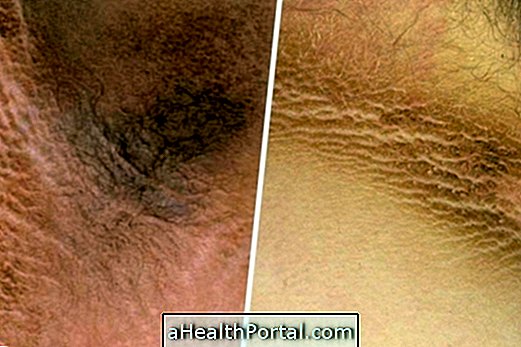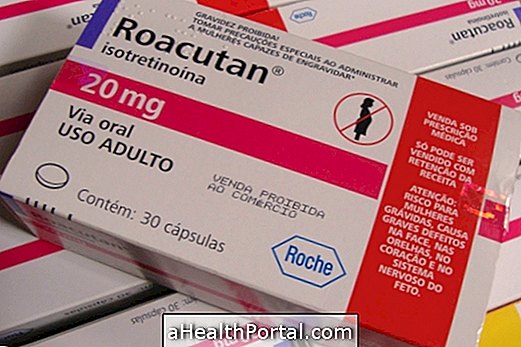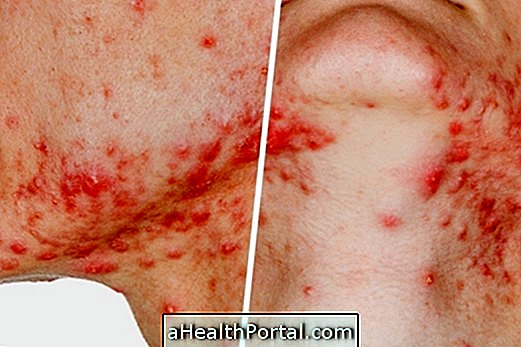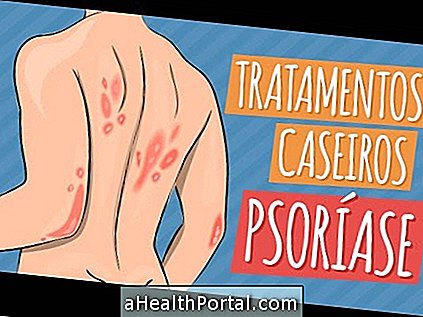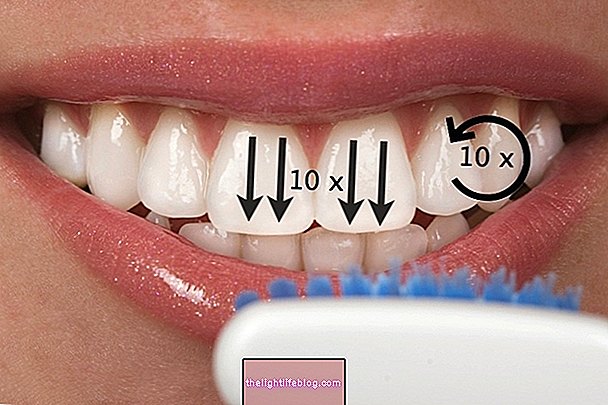Actinic keratosis, also known as actinic keratosis, is a benign disorder that causes brownish red skin lesions, of varying sizes, scaling, rough and hard. It is mainly caused by excessive exposure to the sun, being common in areas of the body such as face, lips, ears, arms, hands and scalp in bald people.
Although actinic keratosis can develop over several years, it usually does not show symptoms until after 40 years of age and is usually not accompanied by any other signs. Most cases are curable and benign, and treatment is done to eliminate the lesions. As soon as the symptoms appear, it is important to see a dermatologist as soon as possible, as there are cases in which actinic keratosis can become skin cancer.
Some measures can help prevent the lesions of actinic keratosis, such as the use of sunscreen with a protection factor above 30, avoiding exposure to the sun during peak hours and regular self-examination of the skin.

Main symptoms
Skin lesions caused by actinic keratosis can have the following characteristics:
- Irregular sizes;
- Brownish red coloring;
- Desquamative, as if they were dry;
- Rough;
- Protruding from the skin and hardened;
In addition, the lesions can cause itching or a burning sensation and in some cases, they are painful and sensitive to touch. In some people, actinic keratosis can become inflamed, with minor bleeding and look like a wound that does not heal.
Main causes
The main cause of the appearance of actinic keratosis is exposure to ultraviolet rays without protection and for long periods, so they usually appear in areas of the skin that are more exposed to the sun.
In addition to the ultraviolet rays of the sun, the rays emitted by the tanning beds can increase the risk of developing actinic keratosis and even some types of skin cancer, so this type of aesthetic procedure is prohibited by ANVISA.
Some people are at greater risk of developing lesions from actinic keratosis as people who are over 40, who work most of the time exposed to the sun, who have fair skin and who have low immunity due to illness or treatment of chemotherapy.
How to confirm the diagnosis
The diagnosis of actinic keratosis is made by a dermatologist, who evaluates the characteristics of the lesions and, if necessary, requests a skin biopsy. Skin biopsy is a simple procedure performed with local anesthesia that consists of removing a small sample of the lesion which is then sent to the laboratory in order to analyze whether it has cancer cells. Find out more about how skin biopsy is done.
How the treatment is done
The treatment for actinic keratosis should always be guided by a dermatologist and started right after the diagnosis, because if left untreated it can turn into skin cancer. The types of treatment most used for actinic keratosis are:
1. Photodynamic therapy
Photodynamic therapy is a treatment that involves the application of laser directly to the lesion of actinic keratosis. Before the photodynamic therapy session, it is necessary to apply an ointment or receive a medicine in the vein to help the laser to kill the altered cells.
The procedure lasts an average of 45 minutes and does not cause pain or discomfort, after which a bandage is placed to protect the site from infections and injuries.
2. Use of creams
In some cases, the dermatologist recommends the use of creams to treat actinic keratosis, such as:
- Fluorouracil: it is the type of ointment most used for actinic keratosis, it helps to eliminate the cells that cause the injury;
- Imiquimod: is an ointment used to strengthen the immune system, helping to kill the cells of the lesion;
- Ingenol-mebutate: is a gel-type ointment that eliminates diseased cells in 2 or 3 days of use;
- Diclofenac with hyaluronic acid: it is also a gel ointment, but it is the least used to treat injuries.
The dermatologist will recommend the type of cream according to the characteristics of the skin lesion, such as size, shape and location. The time of use and the number of times they must be applied can vary from person to person and, therefore, one must always respect the doctor's instructions.
3. Cryotherapy
Cryotherapy consists of the application of liquid nitrogen with a device like spray in order to freeze the diseased cells that cause the lesions of actinic keratosis. Several sessions are held to eliminate the lesions and the duration of this type of treatment depends on the doctor's indication.
This type of treatment does not require anesthesia, as it does not cause pain, however after the sessions it is common for the region of the skin to become red and slightly swollen.
4. Peeling chemical
O peeling chemical is a treatment that involves the application of an acid, called trichloroacetic, directly to the lesions of actinic keratosis. It is performed by a dermatologist in the office, it does not cause pain, but sometimes it causes a burning sensation.
This type of treatment serves to kill the altered cells present in the lesions and after the peeling chemical it is always necessary to use sunscreen due to the risk of burning in the place applied the acid.
What to do to prevent
The best way to prevent actinic keratosis is to use sunscreen, with a minimum protection factor of 30. However, other measures can help reduce the risk of developing actinic keratosis, such as avoiding exposure to the sun between 10 am and 4 pm o'clock in the afternoon, wear hats to protect your face from ultraviolet rays and avoid tanning.
In addition, it is important to do self-examination of the skin frequently and regularly consult a dermatologist, especially people with fair skin or with a family history of skin cancer.
Was this information helpful?
Yes No
Your opinion is important! Write here how we can improve our text:
Any questions? Click here to be answered.
Email in which you want to receive a reply:
Check the confirmation email we sent you.
Your name:
Reason for visit:
--- Choose your reason --- DiseaseLive betterHelp another personGain knowledge
Are you a health professional?
NoMedicalPharmaceuticalsNurseNutritionistBiomedicalPhysiotherapistBeauticianOther
Bibliography
- SKIN CANCER FOUNDATION. Actinic Keratosis. Available in: . Accessed on 25 Oct 2019
- BRAZILIAN SOCIETY OF DERMATOLOGY. Actinic keratosis. 2017. Available at:. Accessed on 25 Oct 2019
- JETTER, Nathan et al. Field Cancerization Therapies for Management of Actinic Keratosis: A Narrative Review. American Journal of Clinical Dermatology. Vol.19. 4.ed; 543–557, 2018
- NATIONAL HEALTH SERVICE. Actinic keratoses. Available in: . Accessed on 25 Oct 2019
- HEALTH LINE. Actinic keratosis. Available in: . Accessed on 25 Oct 2019
- MEDICAL NEWS TODAY. What to know about actinic keratosis. Available in: . Accessed on 25 Oct 2019
